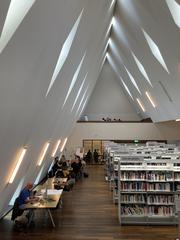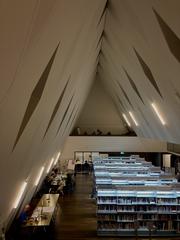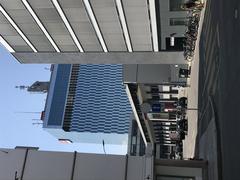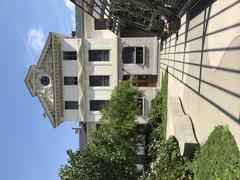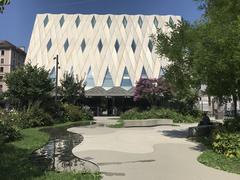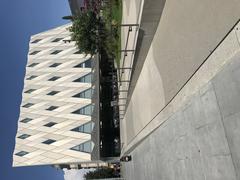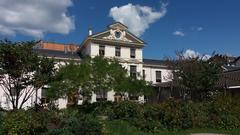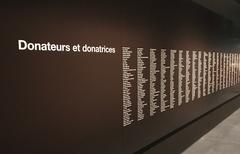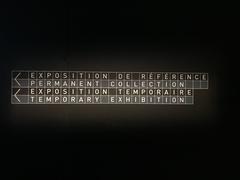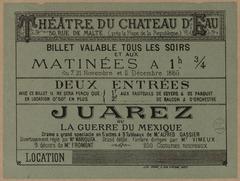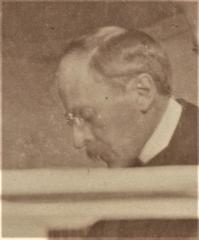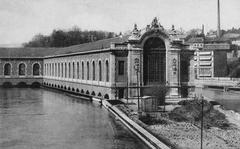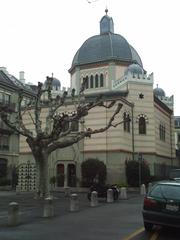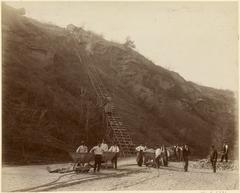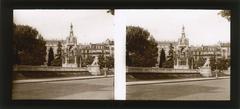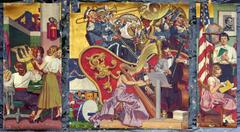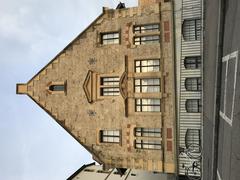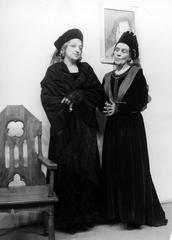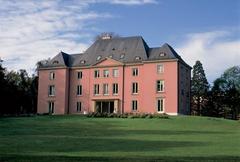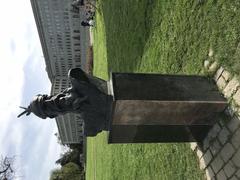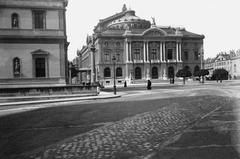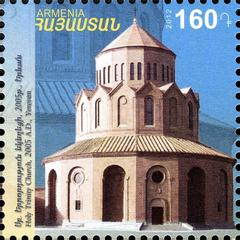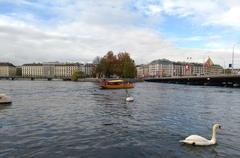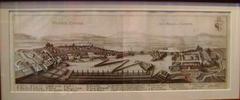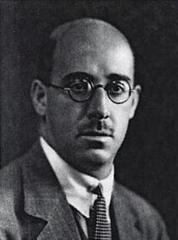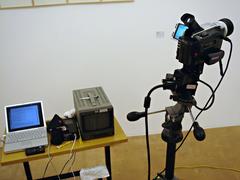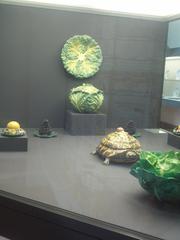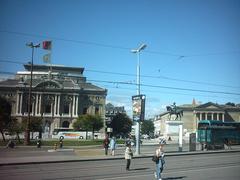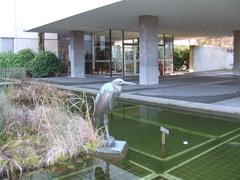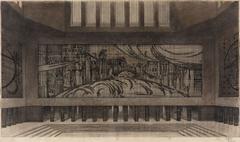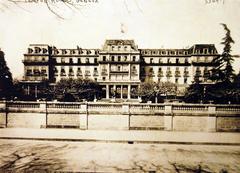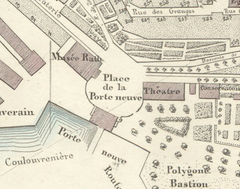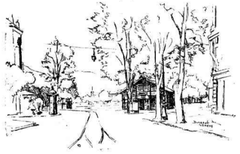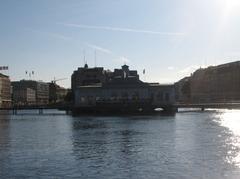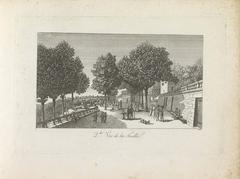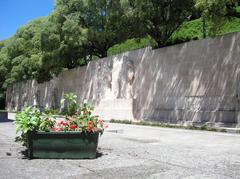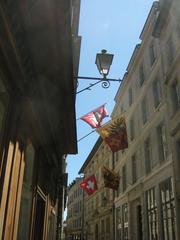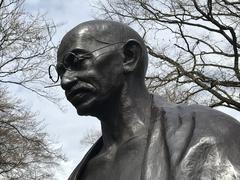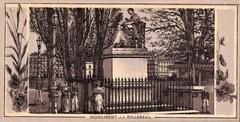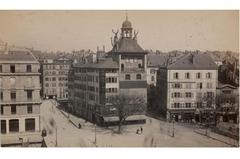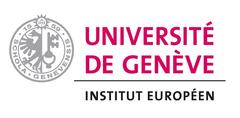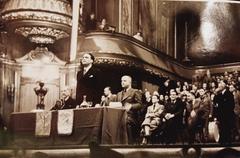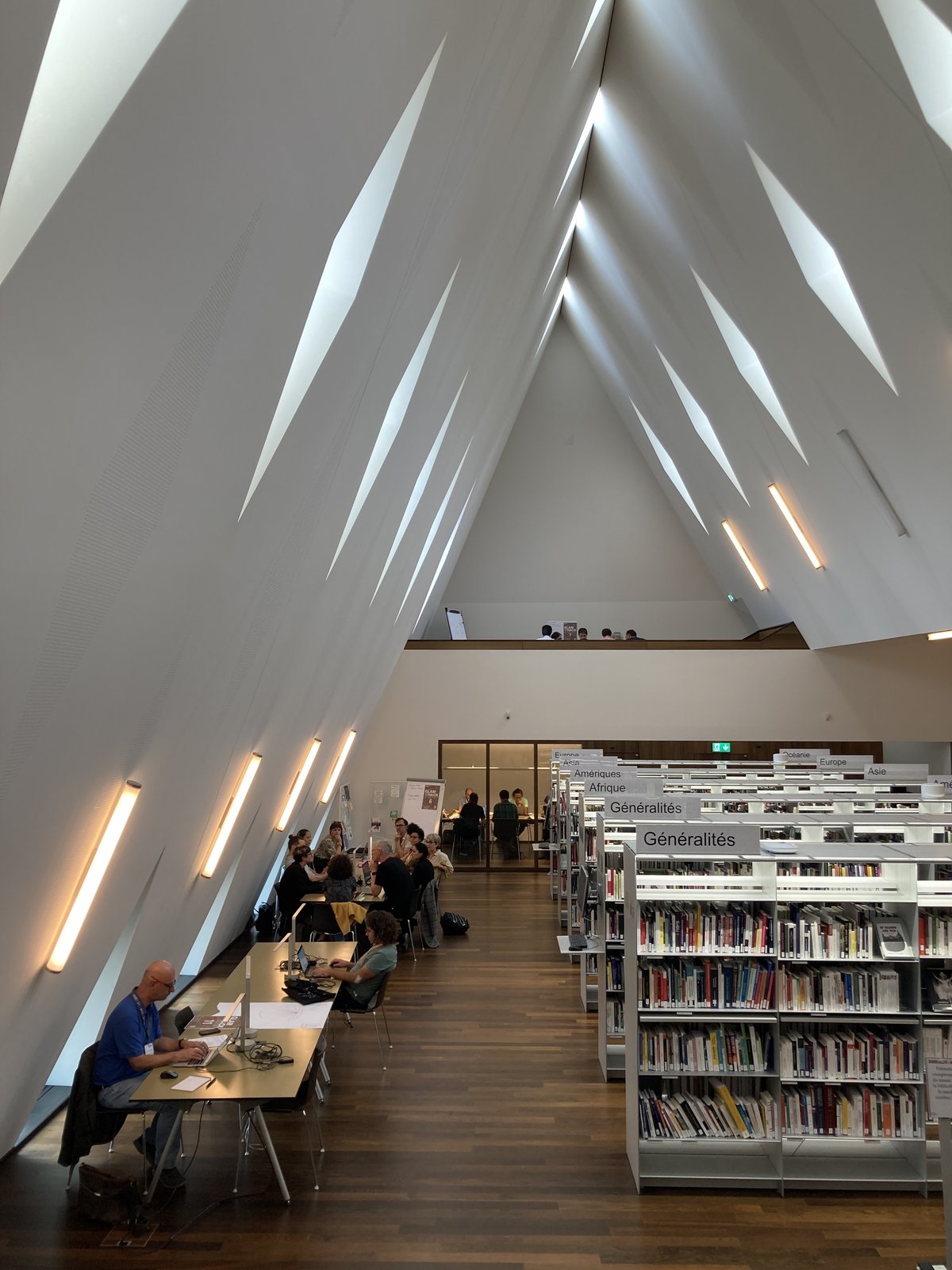
Comprehensive Guide to Visiting Musée d’ethnographie, Geneva, Switzerland
Date: 25/07/2024
Introduction
Discover the rich cultural heritage and diverse history of the Musée d’ethnographie de Genève (MEG), a cornerstone of Geneva’s cultural landscape. Founded in 1901 by Professor Eugène Pittard, the MEG has become one of Switzerland’s most significant ethnographic museums. The museum’s origins can be traced back even further, to 1702, when the Public Library’s Cabinet of Curiosities was established (Wikipedia). This guide aims to provide a comprehensive overview of the museum’s fascinating history, along with practical information for visitors, including hours, tickets, and nearby attractions. Whether you are a history enthusiast, a cultural explorer, or a casual visitor, the MEG offers an enriching experience that spans centuries and civilizations, showcasing over 80,000 objects and 300,000 documents (Discover Walks).
Table of Contents
- Introduction
- History of the Musée d’ethnographie de Genève
- Collections and Exhibitions
- Decolonial Process and Museological Strategy
- Awards and Recognition
- Recent Developments
- Facilities and Visitor Experience
- Accessibility and Practical Information
- Nearby Attractions and Travel Tips
- FAQ
- Conclusion
History of the Musée d’ethnographie de Genève
Founding and Early Years
The Musée d’ethnographie de Genève (MEG) was founded on September 25, 1901, through the initiative of Professor Eugène Pittard, who also held the first Chair of Anthropology at the University of Geneva (Wikipedia). Initially housed in the Mon Repos villa, the museum’s early collections were a combination of public and private donations, including ethnographic collections from the Archaeology Museum and the Musée Ariana, as well as holdings from the Evangelical Missionary Society Museum and weapons from the Geneva History Museum (MEG Historical Milestones).
Development and Expansion
In 1910, the entire space of the Mon Repos villa was dedicated to ethnography, marking a significant milestone in the museum’s history. Eugène Pittard, who became the curator and later the director, aimed to give the institution scientific and educational ambitions. His efforts contributed to the museum’s influence, particularly through his connections with the League of Nations, which was based nearby (MEG Historical Milestones).
Relocation and Growth
By 1939, the museum had outgrown its original location and was moved to the disused buildings of the Mali Primary School on boulevard Carl Vogt. It officially opened in these new premises on July 12, 1941, sharing the space with the Anthropology Department of the University of Geneva until 1967. The building was extended in 1949 to accommodate the growing collection (Discover Walks).
Modernization and New Building
The museum underwent significant changes in the late 20th and early 21st centuries. Proposals for a new building were rejected multiple times between 1980 and 2001. However, the city eventually decided to renovate and extend the existing building. The City Council unanimously approved the project on March 21, 2007 (Discover Walks). The new pagoda-shaped building, designed by Graber Pulver Architekten AG in partnership with the civil engineering firm Weber + Brönnimann EG, was opened on October 31, 2014, after four years of construction work (Discover Walks).
Collections and Exhibitions
The MEG houses one of the largest ethnographic collections in Switzerland, comprising 80,000 objects and 300,000 documents. The collections are beautifully arranged in exhibits that highlight various parts of the world (Discover Walks). The permanent exhibition, “The Archives of Human Diversity,” showcases more than a thousand remarkable objects spanning several centuries of history and a hundred civilizations (My Switzerland).
Decolonial Process and Museological Strategy
In recent years, the MEG has engaged in a decolonial process and reoriented its museological strategy to address global societal and environmental changes. This new vision focuses on issues such as decolonization, collaborative processes, and creativity (Discover Walks).
Awards and Recognition
The MEG has received significant recognition for its contributions to ethnography and museology. In 2017, it won the prestigious European Museum of the Year Award (EMYA), the most important and prestigious award for a museum in Europe (Geneva Tourism).
Recent Developments
To celebrate the 10th anniversary of its new building, the MEG has announced that its exhibitions will be free of charge throughout 2024 (MEG). The permanent exhibition will temporarily close between August 5 and October 31, 2024, to allow for a redesign of the exhibition route, with a reopening scheduled for November 1, 2024 (MEG).
Facilities and Visitor Experience
The MEG offers a comprehensive visitor experience with various facilities. The galleries and an auditorium are located in the basement, while the cafeteria, museum shop, and ticket office are on the ground floor facing the garden. Upstairs, visitors can find restoration and cultural outreach workshops, as well as the Marie Madeleine Lancoux Library, which includes a small space for listening to music from around the world (Discover Walks).
Accessibility and Practical Information
The museum is located at 67 boulevard Carl Vogt, 1205 Genève. It is open from Tuesday to Sunday, 11:00 to 18:00, and closed on Mondays. The ticket office is open from 10:00 to 17:45. The MEG Café welcomes visitors from 9:30 to 18:00, Tuesday through Sunday (MEG). The museum is easily accessible by public transportation, with nearby bus and tram stops, and parking facilities available at Parking de Plainpalais and Parking Uni Mail (MEG).
Nearby Attractions and Travel Tips
While visiting the MEG, explore other historical sites in Geneva, such as the St. Pierre Cathedral and the Museum of Art and History. It’s also recommended to take a walk around the beautiful Jardin Anglais or visit the iconic Jet d’Eau fountain.
FAQ
Q: What are the Musée d’ethnographie de Genève visiting hours?
A: The museum is open from Tuesday to Sunday, 11:00 to 18:00, and closed on Mondays.
Q: How much do tickets for the Musée d’ethnographie de Genève cost?
A: Admission to the museum is free throughout 2024. Regular pricing and special exhibitions fees can be found on the MEG’s official website.
Q: Is the Musée d’ethnographie de Genève accessible by public transport?
A: Yes, the museum is easily accessible by public transportation, with nearby bus and tram stops.
Conclusion
The Musée d’ethnographie de Genève stands as a testament to the rich history and cultural diversity of our world. From its humble beginnings in the Mon Repos villa to its current state-of-the-art pagoda-shaped building, the MEG has continually evolved to meet the needs of its visitors and the global community. With its extensive collections, innovative exhibitions, and commitment to decolonization and sustainability, the MEG remains a vital cultural institution in Geneva and beyond. Visit the museum, explore its treasures, and stay updated by following its social media channels or downloading the mobile app Audiala for more information and updates (MEG).
References
- Wikipedia Contributors. (2023). Musée d’ethnographie de Genève. In Wikipedia, The Free Encyclopedia. Retrieved from Wikipedia
- Discover Walks. (2023). Top 10 Intriguing Facts About Musée d’ethnographie de Genève. Retrieved from Discover Walks
- MEG. (2024). Opening Hours, Tickets, and Access. Retrieved from MEG
- Geneva Tourism. (2023). Ethnography Museum Geneva MEG. Retrieved from Geneva Tourism
- My Switzerland. (2023). Geneva Ethnography Museum. Retrieved from My Switzerland
